Intro:
In the tapestry of art history, few threads shimmer as luminously as those woven by the Dutch Old Masters. From shadowed taverns to radiant landscapes, their canvases capture a world frozen in time, where every brushstroke speaks of passion, precision and an unparalleled artistic tradition. Their legacy, imbued with tales of life, love and the intricacies of the human condition, continues to inspire and fascinate. Join us as we embark on a journey through golden ages and dimly lit studios, unraveling the mystique and marvel of Old Masters painting.
The Renaissance's Echo: Understanding the Term “Old Master”
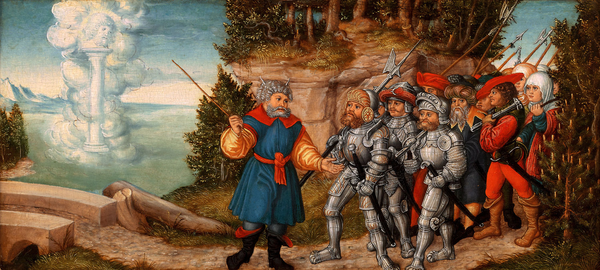 Moses and the Pillar of Cloud by Lucas Cranach the Elder and Studio. M.S. Rau, New Orleans.
Moses and the Pillar of Cloud by Lucas Cranach the Elder and Studio. M.S. Rau, New Orleans.
In the realm of art history, the term “Old Masters” refers to a select group of European artists who achieved the pinnacle of their craft during the Renaissance and Baroque periods, roughly spanning from the 14th to the 18th century. Celebrated for their exceptional technical skills, artistic innovation and profound influence on the trajectory of art, Old Master works continue to serve as benchmarks of excellence, offering invaluable insights into the cultural, societal and artistic landscapes of their eras.
From Rembrandt to Ruysch: Pioneers of the Dutch Golden Age
One of the most renowned groups of Old Masters emerged during the Dutch Golden Age, a period of remarkable artistic achievement in the 17th century. Dutch artists gained recognition for their versatility and innovation. Let's delve into the lives and works of some prominent Dutch artists from this era, exploring their distinct styles and contributions.
Rembrandt van Rijn: The Master of Light and Shadow
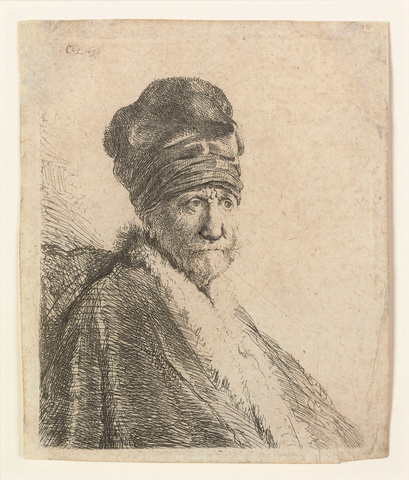
Bust of a Man Wearing a High Cap by Rembrandt van Rijn. M.S. Rau, New Orleans (Sold).
Rembrandt, often regarded by art historians as one of the greatest painters and printmakers in European art history, is known for his exceptional mastery of light and shadow. His distinctive style, characterized by dramatic chiaroscuro and emotional depth, set him apart. Rembrandt's portraits, such as The Night Watch and Self-Portrait with Two Circles, reveal an uncanny ability to capture the inner essence of his subjects. His legacy endures as a beacon of artistic excellence, inspiring generations of artists from Francisco Goya to Vincent van Gogh.
Rachel Ruysch: A Blossom in the Dutch Golden Age
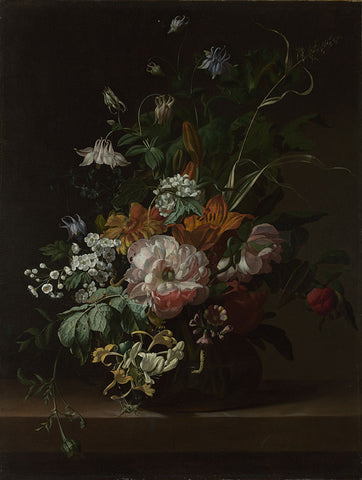
Flowers in a Vase by Rachel Ruysch. Source.
Born in 1664 in The Hague, Netherlands, Ruysch became one of the most celebrated and pioneering female artists of the Dutch Golden Age. Ruysch is considered a master of the still life, rendering florals beautifully as a nod to the ephemeral nature of life. Her exceptional talent for capturing the intricate beauty of botanical subjects in her compositions has earned her a well-deserved place among the luminaries of 17th-century art.
Johannes Vermeer: The Quiet Elegance of Everyday Life

The Milkmaid by Johannes Vermeer. Source.
Johannes Vermeer, a master of genre painting, is celebrated for his exquisite portrayal of domestic scenes bathed in soft, natural light. His meticulous attention to detail and use of color lend an ethereal quality to works like Girl with a Pearl Earring and The Milkmaid. Vermeer's ability to transform mundane moments into captivating masterpieces showcases the power of Dutch Golden Age artists to elevate everyday genre scenes to the realm of art.
Pieter Paul Rubens: Baroque Grandeur and Dynamic Compositions
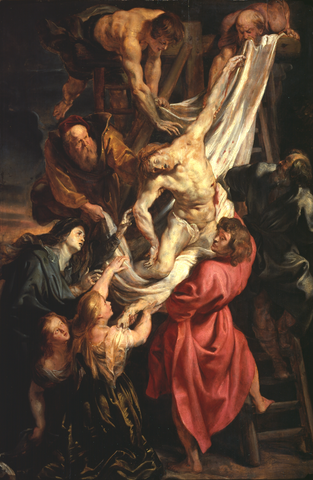
Descent from the Cross by Peter Paul Rubens. Source.
Pieter Paul Rubens, a Flemish artist active in Antwerp, made significant contributions to Dutch art during the 17th century. Known for his grandiose Baroque style paintings, Rubens' works like The Descent from the Cross and The Garden of Love exhibit dynamic compositions, vibrant color palettes and a sense of exuberance. His impact on Dutch art extended beyond his own era, as his workshop produced numerous talented artists who continued his legacy.
Jan van Eyck: Pioneering Realism and Oil Painting Techniques
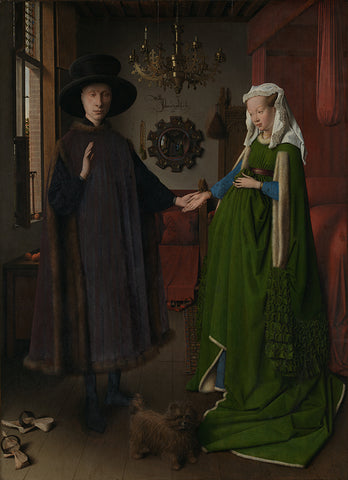
The Arnolfini Portrait by Jan van Eyck. Source.
While Jan van Eyck predates the Dutch Golden Age painting era, his influence on Dutch artists cannot be overstated. Van Eyck's use of oil painting techniques and meticulous attention to detail laid the groundwork for the innovations of later Dutch painters. His masterpiece, The Arnolfini Portrait, exemplifies his pioneering approach to realism. More than a depiction of a wealthy couple, it is laden with symbolic elements representing fertility, wealth and fidelity.
Frans Hals: The Power of Portraiture
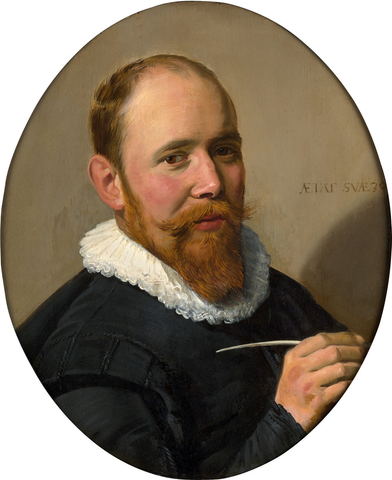
Portrait of a Gentleman by Frans Hals. M.S. Rau, New Orleans.
Frans Hals, born in 1582 in Antwerp, also was renowned for his unique approach to portraiture. Unlike the formal, stiff portraits of his contemporaries, Hals' works exude an air of casual elegance. He captured his subjects with lively brushwork and an acute sense of individual character. His portraits, such as The Laughing Cavalier and Portrait of a Gentleman, are characterized by dynamic poses, expressive faces and a genuine sense of joie de vivre. Hals' ability to convey the essence of his subjects through loose, spontaneous strokes set him apart as a trailblazer in Dutch portraiture.
Albrecht Dürer and the Northern Renaissance Influence
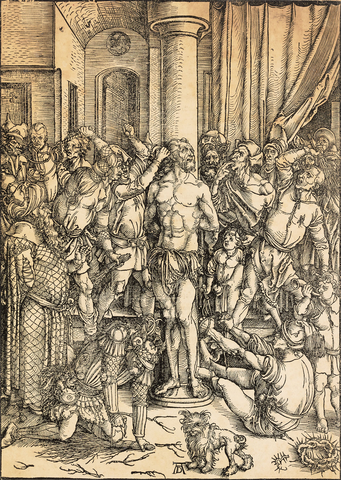 The Scourging of Christ by Albrecht Dürer. M.S. Rau, New Orleans.
The Scourging of Christ by Albrecht Dürer. M.S. Rau, New Orleans.
At the turn of the 15th century, the Northern Renaissance forged new artistic pathways that would come to lay the foundations for the later Dutch Golden Age. Artists from Germany, Flanders, France, the Low Countries and more began to develop a distinctive artistic language, reinterpreting the strides of the Italian Renaissance for new audiences. Many Northern Renaissance artists are counted among the Old Masters for their pioneering artistic achievements.
At the heart of the Northern Renaissance stands Albrecht Dürer, a German artist whose work had an enduring impact on Dutch artists of his time and beyond. Dürer's artistic journey encompassed a wide range of media, including painting, printmaking and drawing. His intricate engravings and woodcuts, such as
Melencolia I and
Knight,
Death, and the Devil, showcased a level of technical virtuosity and attention to detail that captivated Dutch artists.
Highly detailed and infused with the emotional power for which the artist is remembered, his rendering of The Scourging of Christ is an example of the artist’s technical finesse with woodcut printing and his prowess in rendering Northern Renaissance biblical imagery. Dürer renders The Scourging of Christ vividly, with a dynamic flurry of bodies and whips. Christ's enemies display grotesque expressions, jeering as they viciously tear Christ’s hair and flog him. Ominously, the crown of thorns featured in the lower right waits to be placed upon Christ's head, while the large curtain behind the fray foreshadows the temple curtain that will tear in two upon his death.
Dürer's influence on Dutch artists was multifaceted. His precise rendering of anatomy and natural forms, combined with his innovative use of perspective and chiaroscuro, laid the foundation for the meticulous realism that Dutch artists would come to be known for. Dutch painters and printmakers, inspired by Dürer's techniques, began to explore new horizons in their own works, emphasizing detailed observation and a deep connection with the natural world.
Portrait Painting and Daily Life: Capturing Essence in the Seventeenth Century
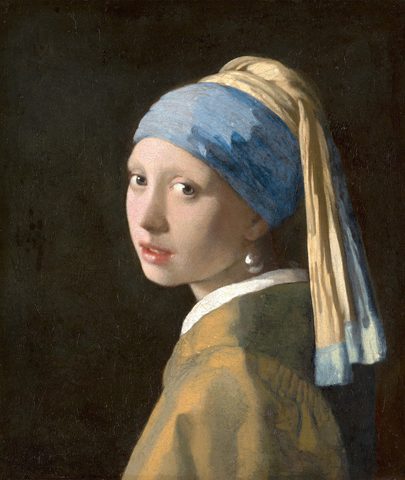 Girl with a Pearl Earring by Johannes Vermeer. Source.
Girl with a Pearl Earring by Johannes Vermeer. Source.
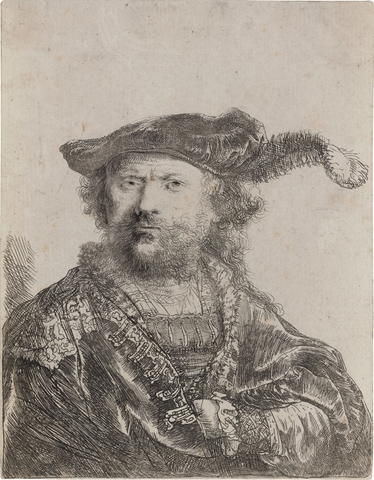 Self-Portrait in a Velvet Cap with Plume by Rembrandt van Rijn. M.S. Rau, New Orleans (Sold).
Self-Portrait in a Velvet Cap with Plume by Rembrandt van Rijn. M.S. Rau, New Orleans (Sold).
Old Masters like Johannes Vermeer and Rembrandt van Rijn excelled not only in depicting grand historical events but also in encapsulating the subtleties of daily life and the human essence in their portrait paintings. Through keen observation and meticulous detail, they transported viewers into the lives of their subjects. Whether it was a Dutch merchant, a noblewoman, or a commoner, these artists were dedicated to capturing not just physical likeness but also the inner character, emotions and social context of their subjects.
One of the hallmarks of Old Masters' portrait painting was their ability to convey emotions and human expressions with astonishing precision. Take, for instance, Rembrandt's
Self-Portrait in a Velvet Cap with Plume above. The interplay of light and shadow. In his portraits, even those of himself, each wrinkle, each crease and each play of light on the subject's face told a story. The introspective gaze of his subject, the furrowed brow and the glint in his eye were all carefully rendered to evoke a profound sense of the human condition.
Old Masters Beyond Borders: Velázquez, European Artists and Modern Inspirations
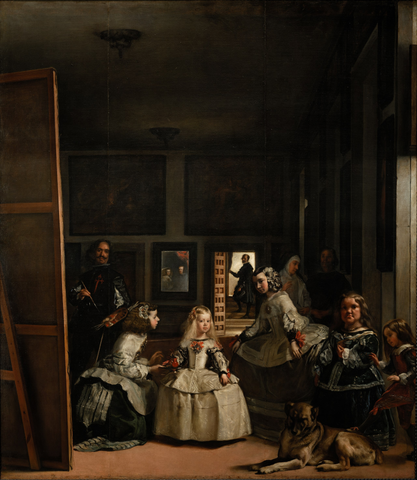 Las Meninas by Diego Velázquez. Source.
Las Meninas by Diego Velázquez. Source.
While they hailed from different corners of the continent, Dutch Old Masters and their European contemporaries were not entirely isolated from each other. Artists across national borders shared common inspirations yet ventured into their own unique territories, informed by their own distinct social and political contexts.
One of the defining features of both the Dutch Old Masters and Spanish Old Masters like Velázquez was a profound shift towards naturalism. The era witnessed a departure from the idealized representations of the past to a fervent embrace of the real world. Dutch Old Masters such as Rembrandt and Vermeer captured the essence of daily life, emphasizing the minutiae of the human experience. Similarly, Velázquez, in works like
Las Meninas, painted with astonishing realism, capturing the nuances of the Spanish court. Shared inspirations in naturalism prompted both groups to explore the interplay of light and shadow, creating depth and dimension in their works.
While Old Masters across Europe
worked to portray naturalism, their contexts diverged significantly. Dutch painters found themselves in a society marked by Protestantism and the burgeoning middle class.
As a result, their works often reflected the mundane aspects of everyday life, intimate domestic scenes and an art market for landscapes and still life paintings. In contrast, Velázquez, residing in the Spanish court of Philip IV, had access to royalty and aristocracy. His portraits exuded grandeur and elegance, showcasing the opulence of the Spanish Golden Age.
The legacies of the Old Masters continue to reverberate through the corridors of art history and contemporary inspiration. Dutch Old Masters like Vermeer, Rembrandt, and Hals remain celebrated for their exploration of light and emotion, while Velázquez's contributions to portraiture and composition continue to inspire contemporary artists worldwide.
Apart from their enduring significance in the art historical canon, Old Master paintings have been experiencing a revival in the present-day art market. Art fairs like The European Fine Art Fair (TEFAF) have explored the relationships between the Old Master paintings and the works of contemporary artists, often exhibiting them side by side. Major auctions of Old Master works, including in monumental sale of
Salvator Mundi for $470 million in 2014, continue to demonstrate the timeless power and admiration for this important period of art history.
Want to learn more about Old Masters? Check out
our collection of fine art.

















